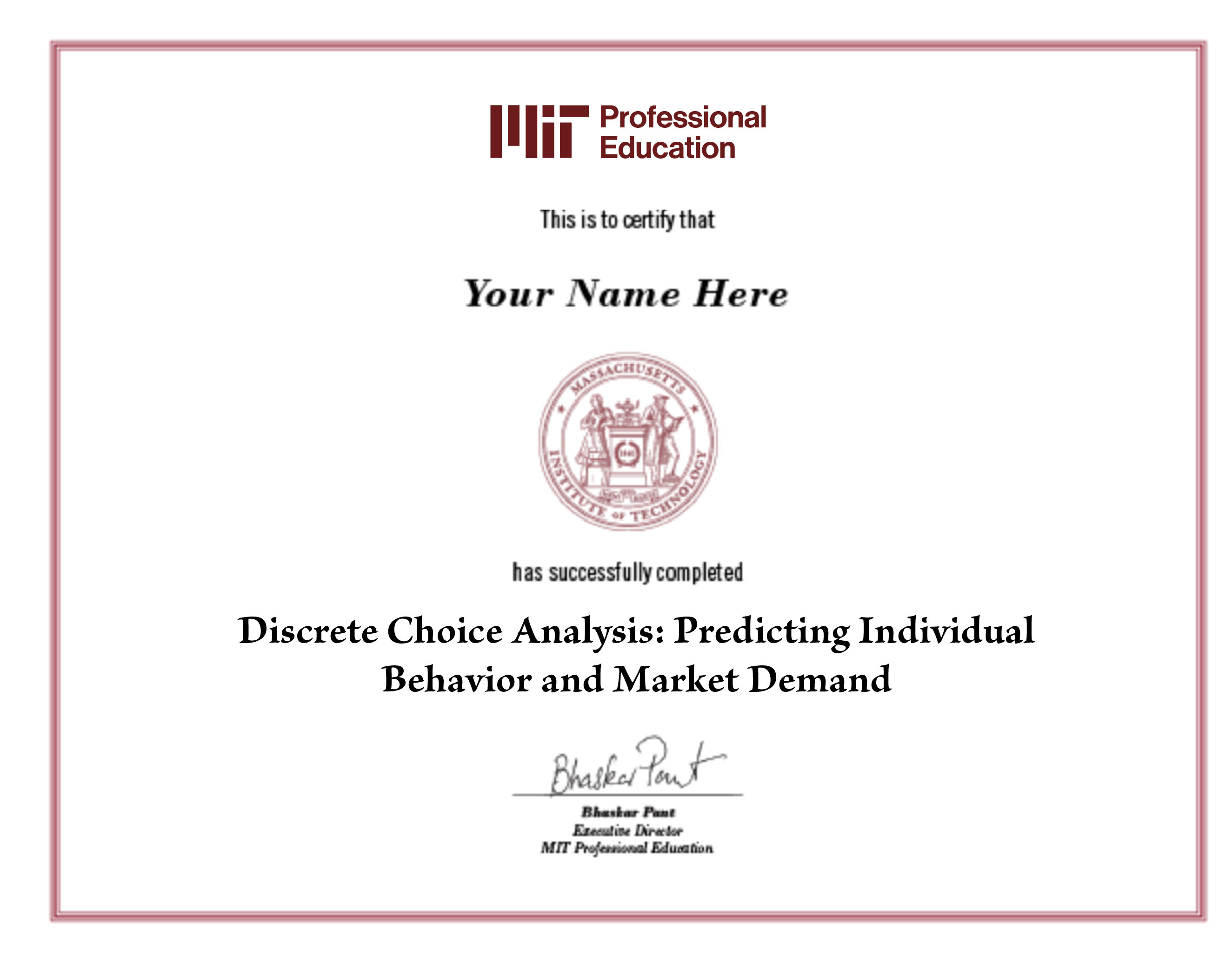This course is offered in a hybrid format, with in-person and live online cohorts attending simultaneously. When registering, select the appropriate registration button below.
Anticipate where your industry is headed—and secure a competitive advantage—by mastering the latest discrete choice models and techniques. In this five-day course, you’ll work with leading MIT experts to discover how to apply discrete choice techniques; analyze challenges related to data collection, model formulation, estimation, testing, and forecasting; and assess online applications that drive optimization and personalization of results.
THIS COURSE MAY BE TAKEN INDIVIDUALLY OR AS PART OF THE PROFESSIONAL CERTIFICATE PROGRAM IN INNOVATION & TECHNOLOGY.
The type of content you will learn in this course, whether it's a foundational understanding of the subject, the hottest trends and developments in the field, or suggested practical applications for industry.
How the course is taught, from traditional classroom lectures and riveting discussions to group projects to engaging and interactive simulations and exercises with your peers.
What level of expertise and familiarity the material in this course assumes you have. The greater the amount of introductory material taught in the course, the less you will need to be familiar with when you attend.



